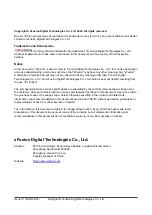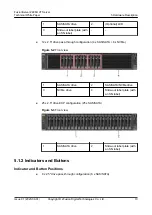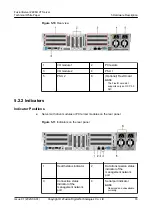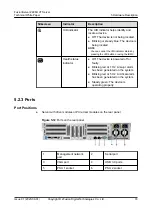
component status indications. The iBMC web management interface helps
technical personnel quickly find faulty components or the components with risk
of faults, simplifying maintenance, speeding up troubleshooting, and improving
system availability.
●
The mounting ear provides the iBMC direct connect management port to support
local iBMC O&M, improving O&M efficiency.
●
A server provides two hot-swappable PSUs in 1+1 redundancy mode and six
hot-swappable fan modules in N+1 redundancy mode, improving system
availability.
●
The onboard Intelligent Baseboard Management Controller (iBMC) can
continuously monitor system parameters, trigger alarms, and take recovery
measures to minimize shutdown.
●
For details on warranty, see
Manageability and Security
●
The built-in iBMC monitors server operating status and provides remote
management.
●
Supports BIOS menu passwords to ensure the security of system startup and
system management.
●
Supports the Network Controller Sideband Interface (NC-SI) feature that allows
a network port to provide functions of both a management network port and a
service network port. The NC-SI feature can be enabled or disabled through the
iBMC or BIOS. The NC-SI feature is disabled by default.
NO TE
The service network port of the NC-SI feature supports the following configurations:
● It can be bound to any network port of the server's OCP 3.0 NIC or other standard
PCIe NICs that support the NC-SI function.
● It allows users to enable or disable the virtual local area network ID (VLAN ID) and
configure the VLAN ID. The VLAN ID is
0
and disabled by default.
● It supports IPv4 and IPv6 addresses, and allows users to configure the IP address,
subnet mask, default gateway, or prefix length of an IPv6 address.
●
The integrated Unified Extensible Firmware Interface (UEFI) improves setup,
configuration, and update efficiency and simplifies fault clearance.
●
Supports the lockable server front bezel to ensure local data security.
●
Intel Execute Disable Bit (EDB) function prevents certain types of malicious
buffer overflow attacks when working with a supported OS.
●
Intel
®
Converged Boot Guard & Trusted Execution Technology defends against
malicious software attacks based on hardware, prevents device firmware from
being maliciously modified, and prevents unauthorized boot block execution. The
technology allows applications to run in their own independent space, freeing
them from other software running in the system and enhancing security.
●
Supports the trusted platform module (TPM) and trusted password module
(TCM) to provide advanced encryption functions, such as digital signature and
remote authentication.
●
Meets the following requirements in NIST SP 800-147B:
FusionServer 2488H V7 Server
Technical White Paper
2 Features
Issue 01 (2023-09-01)
Copyright © xFusion Digital Technologies Co., Ltd.
3











































